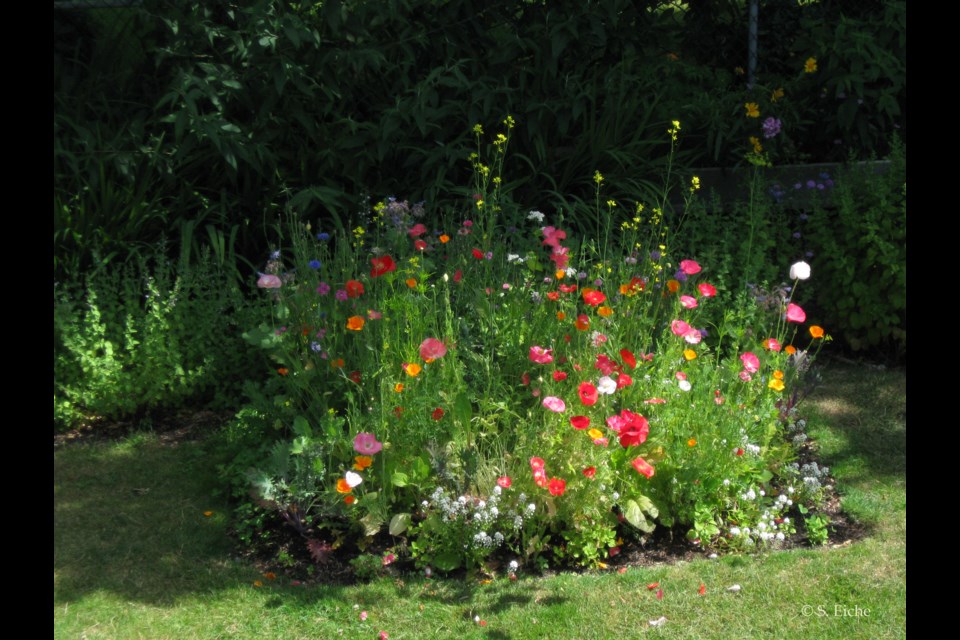Rewilding the environment is a topic making headlines in the mainstream press with increasing frequency, especially in the UK, Europe and the US. Private individuals as well as public entities are getting involved.
What’s meant by rewilding? It’s a term used in environmental conservation referring to a process whereby nature takes care of itself and biodiversity is allowed to flourish. There is no size limit to rewilding. You can rewild whole fields in the countryside or discrete zones in parks as well as areas in an urban yard or a small patch of ground along a street.
Richmond claims to have an Ecological Network (see its website for details). Talked about since at least 2015, this network still seems too restricted. It would also benefit from making a greater impression on the people of Richmond, potentially changing their attitude towards environmental issues.
Take a stroll through the newer residential neighbourhoods in Richmond and you’ll find a preponderance of properties in which the grass is manicured, the vegetation clipped and primped, and the few flowering plants seem chosen for their ornamental appeal. Herbicides and pesticides provide the finishing touches to the property’s beauty parlor treatment. Wildlife in any shape or size is discouraged from visiting, or even entering. Ecological or environmentally friendly are not words that describe such places where monoculture overrules biodiversity.
Grass, when it grows, will eventually be cut. Recently friends and I discussed the subject of mowing, and the different methods currently in use. Some techniques, employed prevalently by landscapers of residential properties, produce the manicured look. Others, preferred by people concerned about the welfare of the environment, are intended to protect, respect and nurture wildlife and maintain an inviting habitat – on either a large or small scale.
There’s a lot of information, from the UK and US, about various mowing methods, depending on the site involved and the purpose of the mowing. The different sources agree on a number of points. One of them, which is more important for larger areas, is to cut grass moving from the centre towards the perimeter so that any wildlife on the ground can escape to the edges rather than end up trapped in the middle. Another recommendation, valid for any size lawn, is to mow only a few paths which would serve as walkways, leaving the rest to grow naturally as a meadow, ideally full of wildflowers. A third suggestion is not to cut or mow right to the edge, but to leave a strip for plants to grow undisturbed. Creatures of all sizes need such a zone to find protection and nourishment.
Something I witnessed yesterday made me aware that an undisturbed zone also offers wildlife the stuff for survival. I observed a bumblebee flying towards some plants, a few flowering, others wilted. Ignoring the flowers, it chewed instead on the wilted brown stem. Then suddenly I understood why. Bumblebees die over the winter, only the queen survives – my bumblebee was collecting material to prepare the underground royal suite!
Sabine Eiche is a local writer and art historian with a PhD from Princeton University. She is passionately involved in preserving the environment and protecting nature. Her columns deal with a broad range of topics and often include the history (etymology) of words in order to shed extra light on the subject.



